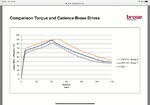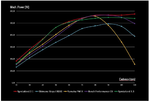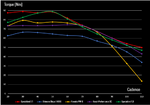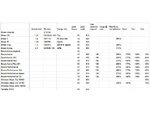Ravi Kempaiah
Well-Known Member
- Region
- Canada
- City
- Halifax
Torque on a mid-drive e-bike is measured at the crank
Thanks for your sharing thoughts.
Since the posting of this thread, more analysis has been done and as @Trail Cruiser reported above, the main difference is: E-bike companies mention electrical torque output but not the mechanical torque.
The only way to report the correct torque is to use a dynamometer. If the torque is indeed measured at the crank.. it leads to several deeper questions:
if the crank is smaller, it leads to smaller torque and if the crank is larger, it leads to more torque, which is not the case for E-bikes. Moreover, these are pedal-assist bikes and they only output power when there is a differential force on the spindle in the bottom bracket (or the motor axle).
As mentioned in the Wikipedia link.
Yamaha motorcyle produces tremendous power and related torque.
There is simply no way an E-bike motor can produce that kind of mechanical torque.






